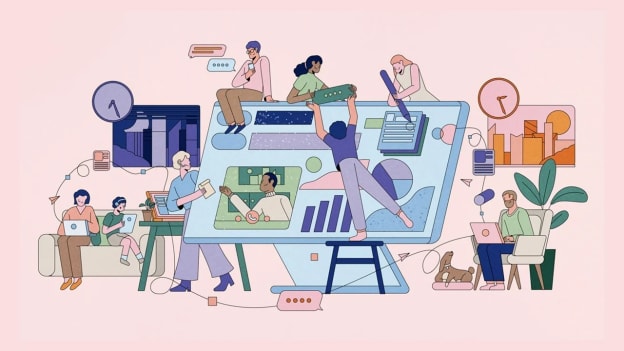Striking a balance between human touch and modern technology

The last three years have highlighted technology-led innovation more than ever in the history of mankind. While the world slowed down due to the pandemic, however, digitisation and technology kept things up and about as best as they could. From digital meetings to virtual onboardings, to mood-o-meters and sentiment analysis chatbots, workplaces have indeed come a long way. Now with permanent remote working models, it is sure that technology would play an even greater role in our lives. It has surely made life simpler by accelerating manual work and repetitive tasks to boost productivity.
Digitisation plays a key role in enabling swift processes and systems; tech-led onboarding formalities, quick polls and surveys, seamless performance management, integrated data & insights, etc. You name it and technology has a faster & more efficient solution for it.
Being extremely dependent on technology though has its own downsides too. With so much elimination of human intervention, it may make one feel lonely after a certain point. Consider the significance of striking up friendships with colleagues over tea breaks vs. muted and switched-off videos on zoom calls, the ability to walk up to your HRBP for a quick resolution over asking a chatbot and attending classroom training with your colleagues over a virtual workshop.
Humans vs tech
Human interaction and association are inherent needs for humans that cannot be forsaken. It has also been proven time and again that it adds to engagement levels. In fact, it may be even right to say that the human touch has never been so important as it is now, given the era of digital disruption and pandemic-induced tension.
Organisations must think of modern technology as an enabler and not the forefront player. Digital tools and mechanisms should be an added support to fasten up processes and remove non-value-add activities and input mechanisms for analysis and decision making. A correct blend between technology and human touchpoints is the secret recipe for engagement.
Creating the right composition starts with empathising with the typical employee lifespan in an organisation. Employers must examine the employee lifecycle in their organisations. Identify the areas that are transactionally voluminous in nature. For example, seeking onboarding documents, running surveys, maintaining developmental plans, etc. These can be digitised for better speed, accuracy and standardization. Organisations may want to look at high-impact areas of an employee lifecycle like performance appraisal discussions, building camaraderie, belongingness, team interactions, etc. for moving these into a more humanized approach over automation, to truly add value that a human mind & a heart can bring to your people experience.
Whilst we recover and resume from the pandemic, we must also realise that people will engage better with workplaces that are more empathetic and genuinely care for them, something that one can only expect from another human being. We all know the benefits of technology in handling data and ensuring seamless systems and processes, that must be leveraged. However, we should also be cognizant of the fact that there is no substitute for personalised human interventions.
Technology has improved our lives in ways we could not have imagined, and we must utilise it effectively and optimally to turn around things faster, seamlessly across time zones & geographies, in a standardised manner, yet not abandon the human touch. By striking a balance between modern technology and a human touch at workplaces, we can keep a people-first culture that brews engagement and essentially leads to the individual, team, and organizational success in the long run.














